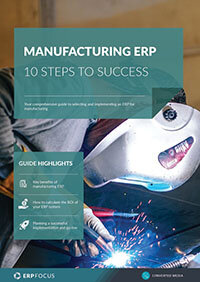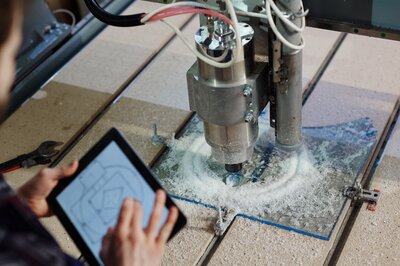Process Manufacturing ERP Go-Live: Changes & Challenges
The culmination of any ERP project is the point the system is switched on, also known as the go-live date. There are three common approaches to ERP go-live that process manufacturing companies can take. Some will continue the old process in parallel with the new ERP. Others will phase in the implementation one module at a time or one location at a time. The final ERP go-live method is the all-at-once approach.
An all-at-once approach makes a lot of sense for process manufacturers - many business processes are integrated with one another making a phased approach almost impossible. Despite this, the risk involved is higher with this approach, so we need to be well prepared.
A Change We Only Want to Make Once
The ingredients go in one end and product comes out the other end. Production might never stop or it can go on for weeks between runs. Production monitoring by your process manufacturing ERP cannot stop during go-live. Quality control is a part of the process. Finance is less related to time periods than to production yields. We charge customers as pallets ship out, but the production flow of the batch keeps going. We pay our suppliers and charge their costs to production batches. ERP signals power the PLC systems that monitor production rates and the variables we must control to produce good product output. If we have to stop production for a major software change such as ERP go-live, we only want to do it once.
Data migration also presents many unique challenges during process manufacturing ERP implementations. There are common sets of data such as customer and supplier files. There are open payables and receivables to manage. Recipes and formulations present a major challenge. These are not simple bills of materials. The ingredients vary with the scale of the desired output. Some of these data sets control product quality and others control compliance, but all are essential for the success of our ERP go-live. Ideally, data migration to the new system should occur before day one. This will give you a chance to iron out the inevitable data creases.
Unlike data migration, not everything can be tested and tweaked before day-one. Eventually you will have to run a production batch through the process manufacturing ERP system in its entirety. It would be naive to assume everything will work on the first attempt - training gaps will become clear, datasets will go missing and integrations will fail. Because of this, always ensure there is slack in your supply chain - both upstream and downstream. You don’t want to inform your customer that their product is not available because you only had one shot at producing it through the new process manufacturing ERP. Nor do you want to fork out for perishable materials only for production to be delayed again and again by go-live issues.
ERP go-live is a major challenge for any business and there are factors unique to process manufacturing which add to this challenge. But, with adequate preparation and scheduling, ERP go-live will be the culmination of a successful ERP project, one which brings with it many of the promised rewards.
Free white paper

Manufacturing ERP: 10 steps to success
Complete step-by-step guide to manufacturing ERP software

Featured white papers
-

Manufacturing ERP: 10 steps to success
Complete step-by-step guide to manufacturing ERP software
Download -

ERP Implementation: 9 steps to success
The 9 proven steps you should follow when implementing ERP
Download -

ERP Implementation Checklist
Over 120 actionable steps to implementing a new ERP successfully
Download
Related articles
-

ERP for make-to-order manufacturing
How can ERP help your make-to-order manufacturing business thrive?
-

CMMC Compliance: What Aerospace and Defense Manufacturers Need to Know
Key insights on CMMC compliance, deadlines, and securing DoD contracts with CMMC 2.0 certificatio...
-

The case for multi-tier ERP implementations
Learn more about multi-tier ERP implementation and why you might need one

